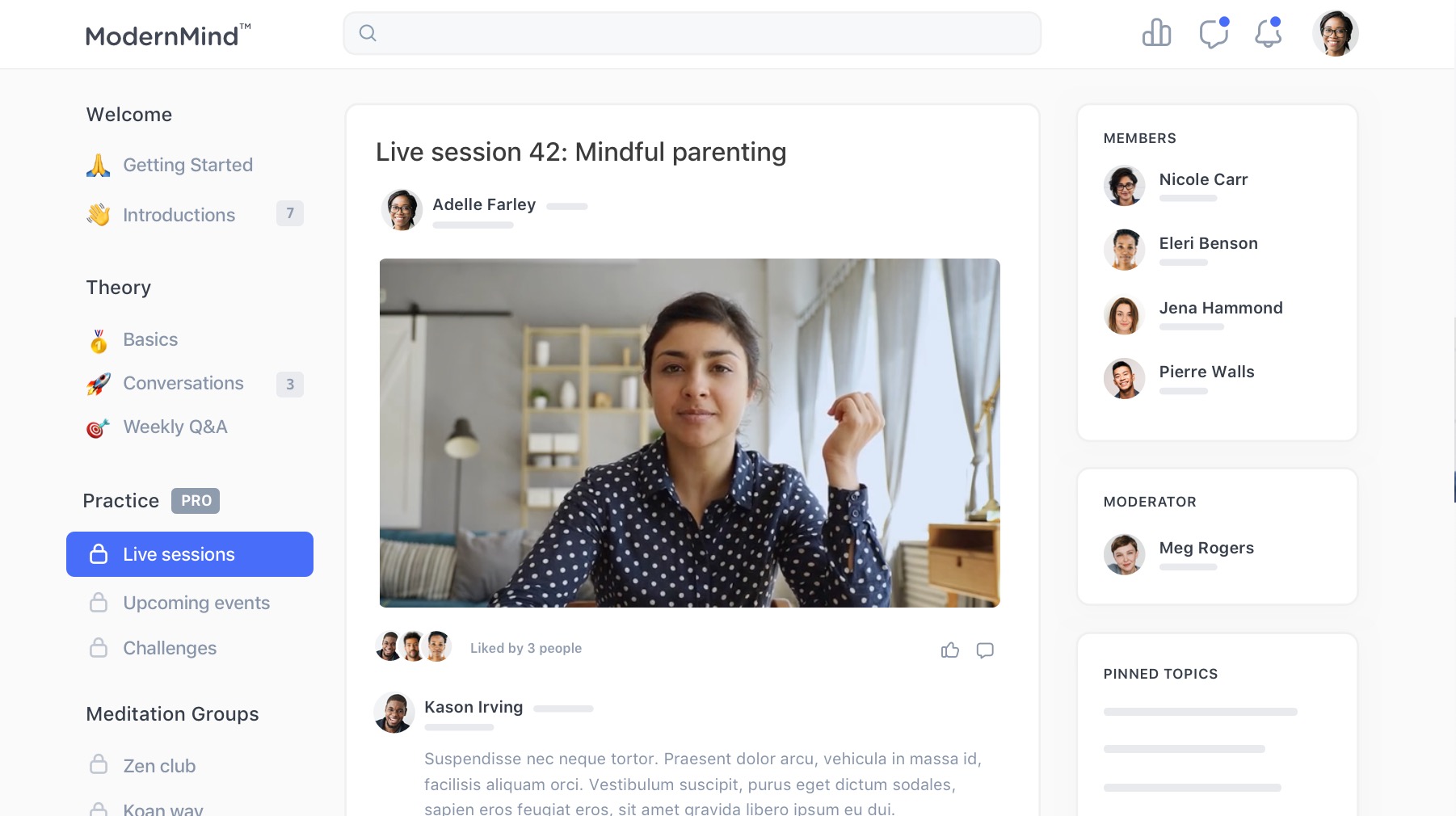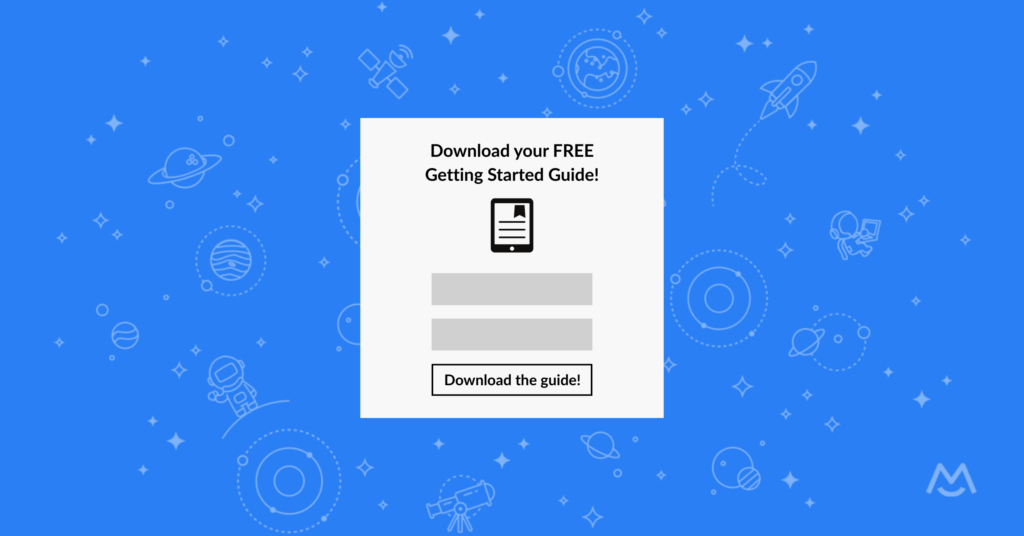What’s the deal with membership businesses?
Membership businesses are all the rage these days. But is starting a membership business a good idea or a bad one?
It seems like everyone and their mother is launching a course, guide, or video series. The reasons for the recent surge in popularity are many, but the model itself has been around forever (e.g. gym memberships, farm CSA, newspaper subscriptions, etc.)
If you think about it, the ideal situation for a business owner is to have customers who regularly pay you on a recurring predictable basis. And even better if the amount of work you need to do only marginally increases as your customer base increases.
An online membership-based business model is attractive from a common sense point of view, but there were previously many barriers to entry from the technology side. This made starting a membership business difficult unless you had tons of funding.
Things have changed, though, and now, there are tools (listed at the end) available that allow a solo founder to have a thriving membership business up and running for under $100/month.
What is a membership business exactly?
An online membership business is a model where your customers have to create an account and pay you money (generally on a recurring basis) to get access to content you create specifically for members.
There are also legitimate and successful membership businesses that charge a one-time fee (e.g. lifetime access) or have some sort of freemium model. For example, members could create an account for free and get access to a limited set of members-only content, but to get full access to all of the content, they would need to upgrade and pay for a higher-tier plan.
The type of content available to members varies wildly from business to business, but it’s usually some combination of the following:
- PDFs
- Videos
- MP3s
- Images
- Text/blog posts
- Forums
- Member directories
- Webinars
A key concept of an honest and well-run membership business is that members can cancel their membership themselves (ideally at any time). Once they cancel, they will lose access to any member-only pages and content they previously had access to. If they want to regain access, they simply rejoin (and pay for) the membership again.
Most people would agree that’s a fair system. Customers can cancel or rejoin whenever they want for whatever reason they choose.
A flexible and user-friendly option for creating and maintaining a membership business is MemberSpace. This no-code software allows you to turn your existing website into a membership business in just a few steps. And because all of your members-only content is hosted directly on your website, you have full control over exactly what you can offer and how it looks!
MemberSpace integrates with most website platforms and empowers you to build and scale a membership business no matter how you choose to sell your digital content.
Types of membership businesses
There is a wide range of membership businesses in the digital world these days. Here are the most common types:
Courses

These typically include a series of modules or sections that members go through at a certain pace (e.g. one module a week) until they have experienced and completed all modules in the course. An example would be a 10-week diet course on how to lower your cholesterol. For more insight, take a look at this example of an online course membership.
Digital libraries

These are a sort of digital warehouse of content that generally gets updated and increases in volume over time. The content is usually streamable or downloadable and similar to a buffet (i.e. all you can eat). An example would be downloadable graphics that real estate agents can use for their social media marketing. For more insight, take a look at this example of a digital library membership.
With MemberSpace, you can add all of your digital content directly to your existing website. And with the Content Links feature, you can easily secure your files to ensure your members-only PDFs, images, videos, etc. are fully protected from website visitors who haven’t joined your membership.

Scheduled content releases

These usually include a single piece of content (i.e. video) that becomes available on a set timetable (e.g. once a week on Mondays). Members anticipate and expect the content to drip on this regular schedule. An example would be a yoga studio that posts a daily 30-minute flow video for students to follow. For more insight, take a look at this example of a scheduled content release membership.
MemberSpace makes it easy to drip out content to each individual member based on when they join your membership. Or, you can schedule content ahead of time to be released to all members on a specific day/at a certain time.

Community forum/directory

This generally involves a private forum where only members can go and have various discussions with each other. An example would be a “women in tech” community for those who are trying to create startups and need advice and support. For more insight, take a look at this example of a community forum/directory membership.
MemberSpace offers an integration with Circle that allows you to seamlessly create a community forum for your members. Using the same login credentials as the ones they create when joining your membership, members can access a private space where they can interact with one another, creating a sense of belonging. Plus, you (the business owner) can also interact with your customers and gain valuable insight into how you can better serve them and meet their needs!

Meetups/events

Member-only events are held online or at a physical location for meeting up in person to discuss ideas, network, hear guest speakers, etc. Oftentimes these events are recorded, and those recordings will also be available on the website for members. An example would be a meetup for musicians to brainstorm new songs, hear live performances, and network with producers. For more insight, take a look at this real example of a meetup/event membership.
Regardless of whether you plan to hold virtual or in-person events, MemberSpace can help you sell events to the public or even create members-only events. It’s as simple as building out a new page on your website with all of the event info and using MemberSpace to protect that page so only those who sign up can have access.
Keep in mind, many membership businesses use a combination of the five models listed above.
Benefits of a membership model
I briefly touched on the benefits of a membership model earlier, but I’ll expand a bit here. A membership business model generally means you are receiving some amount of revenue on a recurring and predictable schedule from various customers. For example, $50/month for access to pages A, B, and C on your website.
The value of this model is the predictability of revenue and also the fact that you are generally well-hedged since no one individual customer makes up a significant portion of your revenue.
Contrast this with a consulting business which usually involves a handful of clients who are each paying you a significant sum, and if any one of them were to cancel or fire you, it would have a material impact on the business.
Another great aspect of membership businesses is they generally scale up to more customers disproportionately from the amount of extra work and money required from the business owner.
This is not always true in all cases, but the most financially successful models work this way. Video courses are a good example here. As you get more paying members, the amount of extra work and costs only marginally increase (e.g. support, hosting space, etc.).
When you have a large pool of customers, you also get a large pool of data. You’ll be able to see what content you provide is resonating with them and receive feedback rapidly so you can evolve your business based on what your members want instead of just guessing.
Downsides of a membership model
It’s not all rainbows and sunshine when it comes to membership businesses. There are very real downsides that you should take into consideration before going down this path with your own business.
For one thing, they can take a while to scale up to the point of producing significant revenue. In the software world, this is often called the “Long, Slow, Ramp of Death” (a term coined by Gail Goodman, the CEO of Constant Contact). It’s applicable to almost any membership business — not just software.
The gist of the “Long, Slow, Ramp of Death” is that it takes a while for any business to get enough recurring revenue to be sustainable and survive in the meantime.
Say you are charging $20/month, and you get 13 customers in month one, 17 in month two, and 20 in month three — that would feel like nice progress. You got 40 customers in only 3 months!
However, your revenue would only be $800/month. After you take out business expenses, there’s not much left over. Certainly not enough to cover the cost of an employee (like a support rep) or your salary. And what happens if your growth per month stalls at 20 customers? What about when members cancel? How do you survive cash flow-wise?
These are difficult questions with no obvious answer.
One option might be to charge more. Another might be to find a new marketing channel so you can get more than 20 customers a month. Either way, you have to figure out some way to survive and get the business floating until you’re generating enough recurring revenue to comfortably pay yourself and, hopefully, a small team to help you.
Another major challenge with a membership model is customer support. By definition, if the goal is to get hundreds or thousands of customers paying you, then you also have to provide support for hundreds or thousands of people.
Depending on the complexity and details of your offering, this could lead to an overwhelming amount of support questions and issues. And if you can’t afford to hire anyone in the early days, you’ll be responsible for helping all those members yourself.
How to get started
A good strategy, if you’re just starting, is to have a full-time or part-time job you work while building your membership business on the side. That job could be for yourself (i.e. consulting), or it could be working for someone else.
Either way, you’ll need to have some consistent form of money coming in while you build up your recurring revenue base from paying members.
Here are some helpful links to get you going:
- How to find your business idea and customer niche
- How to choose pricing and convert website visitors
- No-code tutorials for building different business models online
- Trusted 3rd party tools for membership websites




